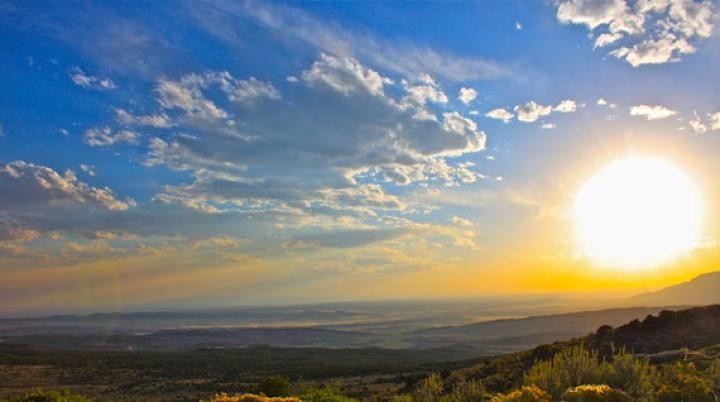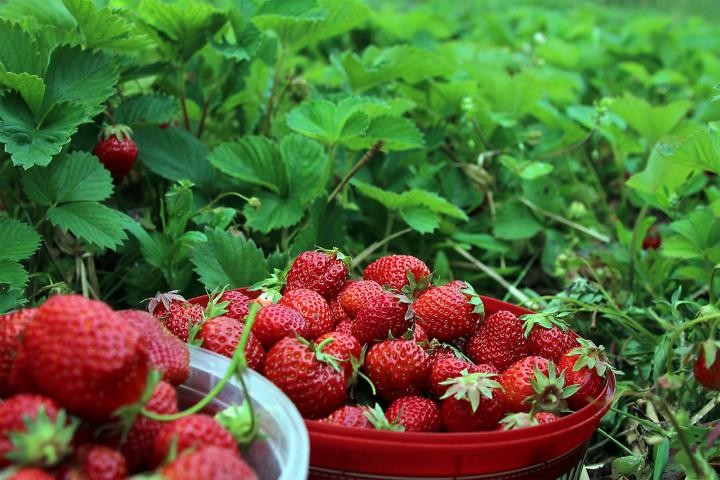The first day of summer 2024 is a significant event marked by the summer solstice. Join WHAT.EDU.VN as we explore this astronomical phenomenon, providing you with accurate information and interesting facts. Discover everything you need to know about the summer solstice and how it influences our seasons, complete with key details on sun positions and season definitions.
1. What is the First Day of Summer 2024?
The first day of summer 2024 in the Northern Hemisphere is marked by the summer solstice, which occurs on Thursday, June 20, 2024. This is when the Sun reaches its northernmost point in the sky, providing the longest day and shortest night of the year. After this date, the days gradually begin to shorten as we head towards autumn.
The summer solstice signifies the astronomical beginning of summer, while meteorologists define summer differently based on monthly temperature cycles. Regardless, the summer solstice is a widely recognized marker of the season’s start.
1.1. Astronomical vs. Meteorological Summer
Understanding the difference between astronomical and meteorological summer can clarify the nuances of when summer officially begins.
Astronomical Summer:
- Definition: Based on the position of the Earth in relation to the Sun.
- Start Date: Marked by the summer solstice, typically between June 20 and June 22 in the Northern Hemisphere.
- Significance: The summer solstice occurs when the Sun reaches its highest point in the sky, resulting in the longest day of the year.
Meteorological Summer:
- Definition: Based on the annual temperature cycle and calendar months.
- Start Date: June 1st and ends on August 31st.
- Significance: This division helps in comparing and organizing climate data more easily, aligning with the warmest months of the year.
1.2. Summer Solstice Dates and Times
Here’s a quick look at the upcoming summer solstice dates:
| Year | Summer Solstice (Northern Hemisphere) |
|---|---|
| 2024 | Thursday, June 20 |
| 2025 | Friday, June 20 |
| 2026 | Sunday, June 21 |
| 2027 | Monday, June 21 |
| 2028 | Tuesday, June 20 |


The exact time of the solstice can vary each year due to the Earth’s elliptical orbit and other astronomical factors.
2. What Happens During the Summer Solstice?
During the summer solstice, several unique astronomical events occur that define this seasonal transition.
2.1. Sun’s Position
On the summer solstice, the Sun reaches its highest point in the sky for the Northern Hemisphere. This means that the Sun’s rays hit the Earth at a more direct angle, leading to increased solar radiation and longer daylight hours. Locations at the Tropic of Cancer and northward experience the Sun directly overhead at local noon, resulting in the shortest shadows of the year.
2.2. Longest Day of the Year
The summer solstice is known as the longest day of the year because it has the maximum amount of daylight hours. After the solstice, the days gradually become shorter as the Earth moves towards the autumnal equinox. This phenomenon is a direct result of the Earth’s tilt on its axis, which causes the Northern Hemisphere to lean towards the Sun during this time.
2.3. Solstice Definition
The term “solstice” comes from the Latin words “sol” (sun) and “sistere” (to stand still.” This name reflects the fact that during the solstice, the Sun appears to pause at its highest point in the sky before changing direction. The Sun’s path, when viewed at the same time each day, forms a flattened figure eight called an analemma, illustrating its changing position throughout the year.
3. Why Does the Summer Solstice Date Vary?
The summer solstice does not occur on the same date each year due to several factors related to the Earth’s orbit and calendar systems.
3.1. Gregorian Calendar
The Gregorian calendar, which we commonly use, has 365 days in a year, with a leap day added every four years to account for the extra fraction of a day in Earth’s orbit. However, the tropical year (the time it takes for the Earth to orbit the Sun) is approximately 365.242199 days. This discrepancy causes the solstice date to shift slightly each year.
3.2. Earth’s Orbit
The Earth’s orbit around the Sun is not perfectly circular but elliptical. This means that the Earth’s speed varies throughout the year, affecting the timing of the solstices and equinoxes. Additionally, gravitational forces from the Moon and other planets, as well as slight wobbles in the Earth’s rotation, can also influence the exact date of the summer solstice.
3.3. Leap Years
Leap years play a crucial role in maintaining the alignment of the calendar year with the tropical year. By adding an extra day every four years, the Gregorian calendar compensates for the accumulated fraction of days, preventing the seasons from drifting significantly over time. Without leap years, the summer solstice would gradually occur later and later in the calendar year.
4. How is the Summer Solstice Celebrated?
Across different cultures and regions, the summer solstice is celebrated with various traditions and festivities that honor the Sun and the arrival of summer.
4.1. Midsummer Traditions
Midsummer is a traditional celebration held around the time of the summer solstice, particularly in Northern Europe. It is a time of feasting, dancing, and bonfires, marking the midpoint of the growing season between planting and harvest. In Sweden, Midsummer’s Eve is a major holiday characterized by maypoles, flower crowns, and communal gatherings.
4.2. Bonfires
Bonfires are a common element in summer solstice celebrations worldwide. These large fires symbolize the power of the Sun and are believed to ward off evil spirits. In some regions, people jump over the bonfires for good luck, while others use the ashes for their protective properties. Bonfires create a sense of community and provide a focal point for solstice festivities.
4.3. Strawberry Picking
Enjoying fresh strawberries is another popular way to celebrate the summer solstice. June is typically the peak season for strawberries, and their sweet flavor and vibrant color make them a perfect symbol of summer. In many cultures, strawberries are associated with abundance, fertility, and good fortune, making them a fitting treat for this special occasion.
5. What Are Some Interesting Facts About the Summer Solstice?
The summer solstice is filled with fascinating facts and astronomical phenomena that add to its significance.
5.1. Earliest Sunrise
Although the summer solstice has the most daylight hours, it does not have the earliest sunrise of the year. In the mid-latitudes of the Northern Hemisphere, the earliest sunrises typically occur about a week before the solstice. This is due to the Earth’s axial tilt and elliptical orbit, which affect the timing of sunrise and sunset throughout the year.
5.2. Slowest Sunset
Similarly, the summer solstice features some of the slowest sunsets of the year. The angle at which the Sun sets relative to the horizon causes it to take longer to dip below the horizon. This effect is most noticeable near the solstices, creating extended twilight hours that are perfect for enjoying outdoor activities.
5.3. Seasons on Other Planets
Other planets in our solar system experience seasons, but their characteristics can vary dramatically. For example, Mercury has virtually no tilt and therefore no true seasons, while Uranus has a tilt of almost 98 degrees, resulting in seasons that last 21 years. These extreme examples highlight the unique conditions that give rise to seasons on Earth.
6. How Does the Summer Solstice Affect Daily Life?
The summer solstice has several practical and cultural impacts on daily life, influencing everything from weather patterns to agricultural practices.
6.1. Weather Patterns
The increased solar radiation during the summer solstice leads to warmer temperatures and the onset of summer weather patterns. However, the hottest days of the year typically occur later in July or August due to seasonal temperature lag. This lag is caused by the Earth’s land and oceans gradually releasing stored heat back into the atmosphere.
6.2. Agricultural Practices
The summer solstice marks a crucial time for agriculture, signaling the peak of the growing season for many crops. Farmers use this period to monitor crop development, manage irrigation, and prepare for the upcoming harvest. The long daylight hours and warm temperatures provide optimal conditions for plant growth, contributing to abundant yields.
6.3. Cultural Celebrations
The summer solstice is celebrated in various ways around the world, reflecting the cultural and historical significance of this astronomical event. These celebrations often involve outdoor activities, communal gatherings, and traditional rituals that honor the Sun and the arrival of summer. Whether it’s Midsummer festivals in Europe or indigenous ceremonies in other parts of the world, the summer solstice is a time for communities to come together and celebrate the season.
7. What Are Some Common Misconceptions About the Summer Solstice?
Several misconceptions surround the summer solstice, often stemming from a lack of understanding of the astronomical principles involved.
7.1. Hottest Day of the Year
One common misconception is that the summer solstice is the hottest day of the year. In reality, the hottest temperatures typically occur later in the summer due to seasonal temperature lag. The Earth’s land and oceans gradually release stored heat back into the atmosphere, leading to a delayed peak in temperatures.
7.2. Same Date Every Year
Another misconception is that the summer solstice occurs on the same date every year. As discussed earlier, the date can vary between June 20 and June 22 due to the Gregorian calendar and the Earth’s elliptical orbit. Leap years also play a role in maintaining the alignment of the calendar year with the tropical year.
7.3. Equal Daylight Everywhere
Some people believe that the summer solstice results in equal daylight hours everywhere on Earth. However, this is not the case. The length of daylight hours varies depending on latitude, with locations closer to the poles experiencing longer days during the summer solstice. The equator, on the other hand, has roughly equal daylight hours year-round.
8. How Can You Celebrate the Summer Solstice?
There are numerous ways to celebrate the summer solstice, ranging from traditional festivities to personal activities that honor the season.
8.1. Outdoor Activities
Engage in outdoor activities that take advantage of the long daylight hours and warm weather. Hiking, biking, swimming, and picnics are all great options for enjoying the summer solstice. Consider organizing a group outing with friends and family to make the most of the day.
8.2. Attend a Festival
Attend a summer solstice festival or event in your local area. Many communities host celebrations with music, food, and traditional rituals. These festivals provide an opportunity to learn about the cultural significance of the solstice and connect with others in your community.
8.3. Garden or Farm Visit
Plant flowers or vegetables in your garden to celebrate the growing season. Alternatively, visit a local farm to pick fresh produce and support local agriculture. Connecting with nature and enjoying the fruits of the Earth is a fitting way to honor the summer solstice.
9. What is the Significance of the Summer Solstice Across Different Cultures?
The summer solstice holds unique significance in various cultures, often tied to ancient traditions and beliefs.
9.1. Ancient Civilizations
Ancient civilizations, such as the Egyptians and Mayans, closely observed the solstices and equinoxes, incorporating them into their calendars and religious practices. The Egyptians built the Great Pyramid of Giza in alignment with the solstices, while the Mayans tracked the movements of the Sun and Venus with remarkable precision. These ancient cultures recognized the importance of the solstices in marking seasonal changes and celestial events.
9.2. Indigenous Traditions
Many indigenous cultures around the world have their own traditions and ceremonies associated with the summer solstice. These traditions often involve honoring the Sun, giving thanks for the Earth’s bounty, and celebrating the renewal of life. Indigenous communities may perform dances, sing songs, and conduct rituals that have been passed down through generations.
9.3. Modern Interpretations
In modern times, the summer solstice continues to be a time for celebration and reflection. People may engage in activities that connect them with nature, such as gardening, hiking, or simply spending time outdoors. The solstice also serves as a reminder of the Earth’s cycles and the importance of environmental stewardship.
10. FAQs About the First Day of Summer
10.1. Is the Summer Solstice Always on June 21st?
No, the summer solstice typically occurs between June 20th and June 22nd in the Northern Hemisphere. The exact date varies due to the Earth’s elliptical orbit around the Sun and the Gregorian calendar system, which includes leap years to account for the discrepancy between the calendar year and the tropical year.
10.2. What Causes the Summer Solstice?
The summer solstice is caused by the Earth’s axial tilt of approximately 23.5 degrees. This tilt causes the Northern Hemisphere to lean towards the Sun during the summer months, resulting in longer daylight hours and more direct sunlight. The summer solstice occurs when the North Pole is at its maximum tilt towards the Sun.
10.3. Is the Summer Solstice the Same in the Southern Hemisphere?
No, the summer solstice in the Northern Hemisphere corresponds to the winter solstice in the Southern Hemisphere. When the North Pole is tilted towards the Sun, the South Pole is tilted away, resulting in shorter daylight hours and winter conditions in the Southern Hemisphere.
10.4. Why is the Summer Solstice Important?
The summer solstice is important for several reasons. It marks the astronomical beginning of summer, signifies the longest day of the year, and has cultural and historical significance in many societies. It also influences weather patterns, agricultural practices, and seasonal celebrations around the world.
10.5. How Can I Find Out the Exact Time of the Summer Solstice?
You can find out the exact time of the summer solstice by consulting astronomical resources, such as websites and publications that provide accurate dates and times for celestial events. NASA, the National Oceanic and Atmospheric Administration (NOAA), and various astronomy-related websites are reliable sources of information.
10.6. Does the Summer Solstice Affect Tides?
The summer solstice can indirectly affect tides, but the primary drivers of tides are the gravitational forces of the Moon and the Sun. During the solstices, the Sun is aligned with the Earth and the Moon, which can result in slightly higher high tides and lower low tides, known as spring tides.
10.7. What is the Difference Between a Solstice and an Equinox?
A solstice occurs when the Sun reaches its highest or lowest point in the sky, resulting in the longest or shortest day of the year. An equinox, on the other hand, occurs when the Sun is directly over the Equator, resulting in equal daylight and nighttime hours in both hemispheres.
10.8. Are There Any Health Effects Associated with the Summer Solstice?
The summer solstice itself does not have direct health effects. However, the increased daylight hours and warmer temperatures during the summer months can affect people’s sleep patterns, energy levels, and exposure to ultraviolet (UV) radiation. It’s important to take precautions such as wearing sunscreen, staying hydrated, and getting enough rest.
10.9. How Did Ancient Cultures Celebrate the Summer Solstice?
Ancient cultures celebrated the summer solstice in various ways, often with religious ceremonies, feasts, and rituals. Some cultures built monuments or structures aligned with the solstices, while others performed dances, sang songs, and lit bonfires to honor the Sun and celebrate the arrival of summer.
10.10. Can the Summer Solstice Be Observed from Space?
Yes, the summer solstice can be observed from space. Satellites and space-based observatories can track the position of the Sun and the tilt of the Earth’s axis, providing valuable data for understanding the astronomical phenomena associated with the solstices and equinoxes.
Understanding the nuances of the first day of summer 2024, including the summer solstice, enriches our appreciation for the Earth’s cycles and their impact on our lives. From astronomical definitions to cultural celebrations, the summer solstice is a significant event that connects us to the natural world.
Do you have more questions or need further clarification on any topic? Visit WHAT.EDU.VN for free answers and expert insights. Our platform offers a wealth of information and a supportive community to help you explore any subject that piques your curiosity.
Unlock a World of Knowledge at WHAT.EDU.VN
At WHAT.EDU.VN, we understand the challenges of finding quick, reliable answers to your questions. Whether you’re a student tackling homework, a professional seeking insights, or simply a curious mind eager to learn, our platform is designed to provide you with the information you need, quickly and easily.
Why Choose WHAT.EDU.VN?
- Free Access: Ask any question and receive answers without any cost.
- Fast Responses: Get the information you need when you need it.
- Knowledgeable Community: Connect with experts and enthusiasts who are passionate about sharing their knowledge.
- Easy-to-Use Platform: Our website is designed for seamless navigation and a user-friendly experience.
Overcome Your Challenges
- No More Endless Searching: Stop wasting time sifting through irrelevant search results. WHAT.EDU.VN provides direct answers to your specific questions.
- Get Answers You Can Trust: Our community is dedicated to providing accurate and reliable information.
- Say Goodbye to Consultation Fees: Access expert knowledge without the burden of expensive consultation fees.
Ready to Get Started?
Don’t let unanswered questions hold you back. Join the WHAT.EDU.VN community today and experience the ease and convenience of having a world of knowledge at your fingertips.
Address: 888 Question City Plaza, Seattle, WA 98101, United States
WhatsApp: +1 (206) 555-7890
Website: WHAT.EDU.VN
Click here to ask your first question and unlock a world of knowledge!
Embrace the spirit of the summer solstice and the endless possibilities of learning with what.edu.vn. Let us be your guide to knowledge and discovery!
